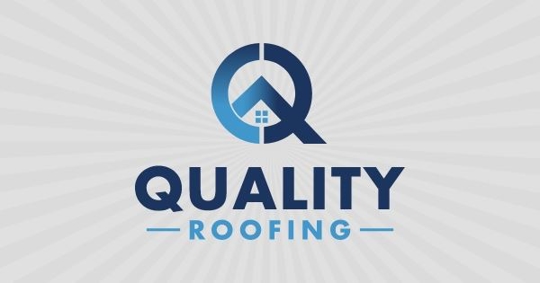Homeowner’s insurance covers catastrophic roof damage that is not related to homeowner negligence or abuse. For instance, an insurance policy typically covers a new roof that has been damaged by a natural disaster, fire, or vandalism. The insurance company assesses the value of the claim and covers part or all of the repair costs.
However, the kind of roof damage that a homeowner’s insurance policy covers is only part of the equation. There are several factors that adjusters consider when determining if the insurance company will cover the damage. If the roof is more than 20 years old, it can affect how much the insurer will compensate you. If you have neglected the roof over the years, the adjuster may cite that as a reason to deny your claim.
Common Roof Damage Claims Covered by Homeowners Insurance
Generally speaking, homeowner’s insurance policies cover roof damage that cannot be linked back to the owner. Some examples may include:
Severe Weather
Severe weather is common in Florida. Ongoing threats of high winds, harsh rains, hail, and even tornadoes plague homeowners each year. Natural disasters can cause massive damage to a roof, costing homeowners thousands of dollars in repairs. Fortunately, homeowner’s insurance policies cover storm damage.
Fires
Contrary to popular opinion, homeowner’s insurance covers accidental fires. If you were to leave a stove on or knock over a candle, causing your house to go up in flames, homeowner’s insurance would cover the damage, including your roof. Policies are designed to cover certain types of incidents, including accidental fires. Your policy, however, will not cover intentional fires (i.e., arson) caused by the property owner.
Falling Trees
Also, contrary to popular opinion, your homeowner’s insurance policy will not cover all falling tree roof damage claims. Why? Because most claims walk a fine line between weather-related tree falls and tree falls caused by neglect. For example, if you were aware that an old overhanging tree was a threat to the roof but did nothing about the tree, the insurance company could deny your claim. Alternatively, if an otherwise solid tree was blown into your roof by a hurricane, the insurer will likely cover the claim.
Vandalism
Although vandalism is rarer than falling trees, natural disasters, or fires, it does occur occasionally. Vandalism is generally covered under an all-risks or all-perils policy unless it is specifically excluded. Vandalism is defined as damage done to someone else’s roof simply for the sake of causing damage. Malicious mischief is similar, though the damage may not be intentional. Some situations, such as egging a roof, constitute malicious behavior but not necessarily vandalism.
Home Interior
While it is possible to get additional insurance for your roof, most coverage is under the umbrella of your comprehensive homeowner’s insurance policy. As such, your policy covers anything else that may be damaged due to your roof is compromised. A hurricane that causes a part of the roof to come off may also lead to further damage to the home’s interior. Therefore, the policy will cover this type of damage as well.
How Does Coverage Work for Roof Damage Claims?
The roof is an integral part of your home’s structure. So, the dwelling coverage section of your homeowner’s insurance policy typically protects you from perils. Damage and destruction from disasters qualify the roof for a partial or total replacement. The value of your claim and exactly what your insurance covers are outlined in your policy.
Keep in mind that you will have to pay a deductible before your coverage kicks in. Insurance providers in high-risk states typically impose a higher deductible for damage that occurs from hurricanes or hailstorms. If you want to protect your roof, you will probably pay more for additional coverage. You may also have to take out additional coverage for hurricane wind or water damage. Options are available for the type and level of coverage you want for your home and roof.
When Does Homeowner’s insurance Not Cover Roof Damage?
There are specific instances when homeowners’ insurance will not cover roof damage.
Pest Damage
From an insurer’s perspective, pest control is your responsibility. As such, you should deal with pests before they destroy your roof. Squirrel, bird, rat, ant, and termite damage is preventable. Therefore, the insurance company will not cover most damage caused by pests. The only exception would be if a sudden pest attack led to a disaster (e.g., a squirrel gnawing on an electrical wire that sparked a fire).
Normal Wear and Tear
If you live in Florida, you can expect harsh weather to produce wear and tear on your roof. Since normal wear is inevitable, you are responsible for scheduling routine roof inspections and roof maintenance. Inspections and maintenance are not covered under your insurance policy because they are considered preventative work that keeps your roof in excellent condition.
Cosmetic Damage
Cosmetic loss or damage alters the physical appearance of the roof covering. It does not result in damage that allows water penetration or prevents the roof from performing its intended function. High winds may rip a few shingles off the roof, causing minimal damage. Chances are that your insurer will not approve this type of claim. Furthermore, you probably want to avoid submitting a claim on such a small repair, as this could affect further claims or cause your rates to increase unnecessarily.
Schedule a Free Roof Inspection in Florida
Quality Roofing offers premier roofing services for homeowners in Florida. Call (850) 753-0041 or fill out this quick form on our contact page to schedule a free roof inspection
The post What Kind of Roof Damage Does Homeowner’s Insurance Cover? appeared first on Quality Roofing Solutions.

